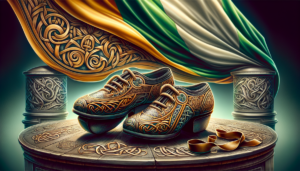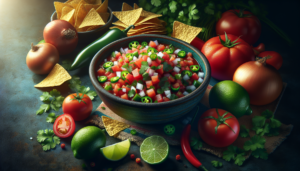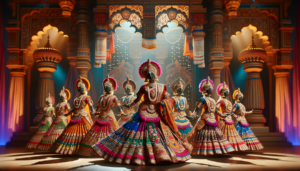Introduction to Tango
Tango, a captivating dance originating from Argentina, has captured the hearts of people worldwide. With its intricate steps, passionate expressions, and rich history, tango has become an iconic symbol of Argentine culture. This mesmerizing dance form combines elements of music, movement, and emotion, creating a unique experience for both dancers and spectators alike.
The allure of tango lies not only in its technical aspects but also in the deep connection formed between dance partners. It is a dance that requires trust, communication, and a willingness to surrender to the rhythm and each other. Through the embrace and the subtle cues exchanged, tango dancers create a language of their own, expressing a wide range of emotions from tenderness to intensity.
What is Tango?
At its core, tango is a social dance that originated in the late 19th century in the working-class neighborhoods of Buenos Aires, Argentina, and Montevideo, Uruguay. It is characterized by its close embrace, intricate footwork, and improvisational nature. Tango is typically danced to music featuring the distinctive sounds of the bandoneon, a type of concertina, along with other instruments such as the piano, violin, and guitar.
One of the unique aspects of Argentine tango is the concept of “leading and following.” In this dynamic, the leader, traditionally the male, initiates the movements and guides the follower, usually the female, through the dance. However, modern tango has evolved to embrace same-sex couples and role reversals, challenging traditional gender norms.
The Origins of Tango
The exact origins of tango are somewhat obscure, but it is believed to have emerged from a fusion of various music and dance styles brought by European immigrants, enslaved Africans, and the native population in the Rio de la Plata region. These influences included the Cuban habanera, Uruguayan candombe, and Argentinian milonga, among others.
Initially, tango was considered a dance of the lower classes and was often associated with brothels and bars in the poorest districts of Buenos Aires. However, as tango gained popularity and spread to Europe in the early 20th century, it began to shed its scandalous reputation and evolved into a more refined and socially acceptable dance form.
The Elements of Tango
Tango Music
Music is an integral part of the tango experience, setting the mood and guiding the dancers’ movements. Tango music is characterized by its distinct rhythm, known as “2×4,” which consists of two strong beats followed by two weaker beats. This rhythmic pattern, along with the melancholic melodies and nostalgic lyrics, creates the signature sound of tango.
Some of the most renowned tango composers and musicians include Carlos Gardel, Astor Piazzolla, Aníbal Troilo, and Osvaldo Pugliese. These artists have left an indelible mark on the history of tango, and their compositions continue to inspire and influence dancers and musicians worldwide.
Tango Dance Steps
Tango is known for its intricate and precise footwork, which requires a great deal of skill, coordination, and practice to master. Some of the basic tango steps include the salida (exit), the cruzada (cross), the ocho (figure eight), and the molinete (windmill). These steps are combined and varied to create an endless array of patterns and sequences, allowing dancers to express their creativity and individuality.
In addition to the footwork, tango also involves other essential elements such as the embrace, the connection between partners, and the use of pauses and embellishments, known as “adornos”. Mastering these aspects of the dance is crucial for achieving the fluidity, elegance, and emotional depth that characterize tango.
Cultural Significance of Tango
Tango is more than just a dance; it is a cultural icon that represents the essence of Argentine identity. It has become a symbol of passion, nostalgia, and resilience, reflecting the joys and struggles of the Argentine people throughout history. Tango has also served as a means of social commentary, with its lyrics often addressing themes of love, loss, and the hardships of everyday life.
Today, tango continues to evolve and adapt to modern times while preserving its rich heritage. It has become a global phenomenon, with tango communities and festivals flourishing in cities around the world. The UNESCO has even recognized tango as part of the Intangible Cultural Heritage of Humanity, acknowledging its significance and contribution to world culture.
Learning Tango
Finding Tango Lessons
For those interested in learning tango, there are numerous opportunities to get started. Many cities have tango schools, clubs, or community centers that offer classes for beginners and more advanced dancers. It is essential to find a reputable instructor who can provide a solid foundation in tango technique, musicality, and etiquette.
Private lessons can be an excellent option for those who prefer personalized attention and faster progress. Group classes, on the other hand, offer the opportunity to meet other tango enthusiasts and practice social dancing skills. It is recommended to start with beginner-level classes and gradually work up to more advanced levels as skills and confidence improve.
Essential Tango Gear
While tango can be danced in various types of clothing, there are certain items that are considered essential for comfort, safety, and style. Tango shoes, for both men and women, are specifically designed to provide the necessary support, flexibility, and grip needed for the intricate footwork and pivots. They typically have a slim profile, a closed toe, and a slightly raised heel for women.
In terms of attire, tango dancers often opt for clothing that allows for ease of movement and a classic, elegant look. For women, this may include dresses with slits, flowing skirts, or form-fitting pants. Men usually wear dress pants, button-down shirts, and sometimes a vest or jacket. Accessories such as hair ornaments, shawls, and suspenders can add a touch of personal style to the tango ensemble.
| Essential Tango Gear | Description |
|---|---|
| Tango Shoes | Specialized shoes designed for tango, providing support, flexibility, and grip. |
| Comfortable Clothing | Attire that allows for ease of movement, such as dresses with slits, flowing skirts, or dress pants. |
| Accessories | Optional items like hair ornaments, shawls, and suspenders to add personal style. |
Tango Performances and Competitions
Tango is not only enjoyed in social dance settings but also through performances and competitions. Professional tango dancers often showcase their skills in choreographed stage productions, combining the traditional elements of tango with modern theatrical techniques. These performances can be found in tango shows, theaters, and special events worldwide.
For those looking to test their tango skills, there are numerous competitions held at local, national, and international levels. These events attract tango dancers of all ages and skill levels, providing a platform to showcase their talent and creativity. Some of the most prestigious tango competitions include the World Tango Championship in Buenos Aires and the Tango Buenos Aires Festival.
Tango Around the World
Major Tango Festivals
Tango festivals have become increasingly popular in recent years, bringing together tango enthusiasts from all corners of the globe. These events typically feature workshops, performances, social dancing, and live music, creating an immersive tango experience. Some of the most notable tango festivals include:
- Tango Buenos Aires Festival (Argentina)
- Nora’s Tango Week (Croatia)
- European Tango Festival (Spain)
- Belgrade Tango Encuentro (Serbia)
- Portland TangoFest (USA)
Attending a tango festival is an excellent way to deepen one’s understanding and appreciation of the dance, connect with fellow enthusiasts, and experience the unique flavor of tango in different parts of the world.
Global Influence of Tango
Tango’s influence extends far beyond the borders of Argentina, having captivated audiences and inspired artists in various fields. Its music has been incorporated into classical compositions, jazz arrangements, and contemporary pop songs, while its dance elements have been adapted into other styles such as ballroom dance and figure skating.
In addition to its artistic impact, tango has also played a role in fostering cultural exchange and understanding between nations. Tango communities around the world have created a global network of individuals united by their passion for this beautiful dance, transcending language barriers and cultural differences.
Conclusion
Tango is a dance that embodies passion, connection, and artistry. From its humble beginnings in the streets of Buenos Aires to its current status as a global phenomenon, tango has captivated the hearts and minds of people everywhere. Whether you are a seasoned dancer or a curious observer, tango offers a rich and rewarding experience that combines music, movement, and emotion in a truly unique way.
By delving into the history, elements, and culture surrounding tango, one can gain a deeper appreciation for this magnificent dance form. So why not take a step into the world of tango and discover the passion and art that lies within? Embrace the rhythm, connect with a partner, and let the magic of tango unfold on the dance floor.






